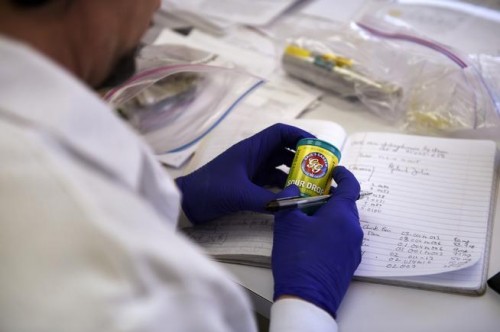A year of debate, a slew of labeling regulations and multiple educational campaigns have not been effective in answering a critical question surrounding marijuana-infused edible products: How do you stop a consumer from eating too much?
Edibles — once thought to be the simple entry for those who wanted to try the newly legalized recreational drug — have been implicated in two suicides and one murder in the past 13 months. Only one edibles-related death has been confirmed by officials, but the family of 22-year-old Oklahoma tourist Luke Goodman, who fatally shot himself while on a March ski vacation in Keystone, immediately blamed his death on the infused edibles he overindulged in that day.
“It was 100 percent the drugs,” Kim Goodman said at the time, acknowledging that her son didn’t read the government-mandated warnings on the packaging and ended up eating five times the state’s recommended dose for edible cannabis.
Much of the regulatory debate around edibles has focused on preventing accidental ingestion. But the manner in which edibles affect a person raises the question whether more should be done to educate buyers before they leave the shop.
“There’s a learning curve for consumers of edibles,” said Art Way, Colorado’s state director of the pro-legalization Drug Policy Alliance. “We cannot escape the issue of personal responsibility. That said, the industry should do all that is reasonable in the formative years of marijuana legalization to combat concerns around edibles.”
Edibles
“It’s not an exact science” — Lab: Edibles’ potency more accurate than a year ago, still needs work
Watch The Cannabist Show. Follow The Cannabist on Twitter and Facebook
Nearly 5 million edibles were sold in Colorado shops in 2014. Not only are edibles’ highs more delayed and long-lasting than smoking or vaporizing cannabis, but some brands continue to severely mismeasure their products’ potency, according to a new, Denver Post-commissioned series of lab tests measuring THC levels in 10 popular edibles brands.
Earlier this year, it seemed as if the state’s legislative pot docket had calmed down after a bustling 2014 of regulations and rule making. For edibles alone: Warning labels already had been standardized with more information, 10-milligram doses of THC universally had become individually wrapped, the state was working on uniform lab testing standards, and users encountered educational campaigns at every turn — movie theaters, pot shops, interstate billboards.
But in the wake of Goodman’s death, many recalled 19-year-old Wyoming college student Levy Thamba, who became agitated after eating an infused cookie with more than six times the state’s recommended dose in March 2014 and leapt to his death from a Denver hotel balcony. The Denver coroner listed “marijuana intoxication” as a significant condition contributing to Thamba’s death.

As the Summit County coroner awaits Goodman’s toxicology report in the coming weeks, his death — be it related to cannabis or not — served as a reminder that the edibles conversation is anything but over.
“As we continue down this road, we really need to keep an open mind,” said Lewis Koski, director of Colorado’s Marijuana Enforcement Division. “We have to consider various incidents that occur and work on putting them into perspective, as in: ‘What things do we, as the regulators, have control over to make things more efficient?’ “
Koski looked to the edibles work group that met four times in 2014 to discuss making edibles “clearly identifiable.” Improving and simplifying the labels on edibles — reminding consumers that a single dose is 10 milligrams and to wait one to two hours to feel the effect before ingesting more — was discussed by the work group, which included state officials, pot shop owners, representatives from edibles kitchens and children’s health advocates.
Too much, too fast
The new rules are due Jan. 1, but while these regulations might help curb accidental ingestions, it remains unclear if they will stop individuals from eating too much, too fast. Prominent Denver pot shop owner Ean Seeb pointed to Goodman’s suicide to illustrate how such tragedies can’t always be prevented by the state, the industry and the regulations they draft.
“At no point do I feel the retailer who sold (Goodman) the cannabis is responsible for his death,” said Seeb, co-owner of Denver Relief and chair of the National Cannabis Industry Association. “I’m not a parent, but I was disappointed because I know that if I have a friend or family member who is rambling incoherently and not acting himself that I’m not leaving that person alone.”
Seeb referred to Goodman’s family, who said he was acting erratically and he “didn’t recognize our presence almost. … I had never seen him like this” — but still chose to leave him alone in the condo as they went to the hot tub, according to reports.
Read more of this special report, and see a chart comparing THC levels in popular Colorado edibles:
